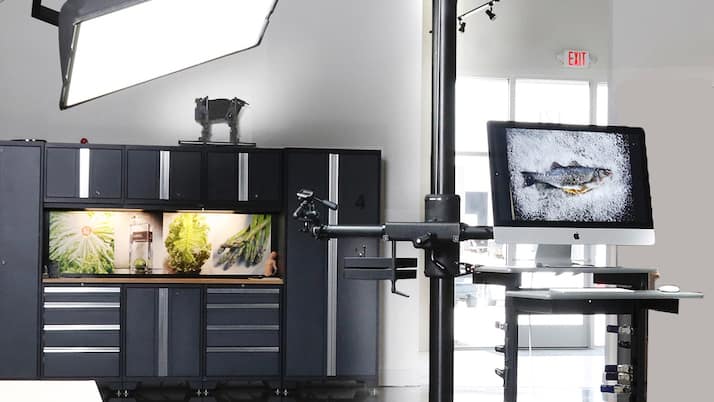Product photography has been around for well over 100 years, when the first commercial photography process known as the daguerreotype was brought to the masses. Not long after, businesses began to see how efficient product photography was for widespread advertising use in magazines.
More recently, product photography is everywhere from the phones in our pockets to massive billboards on the street. For businesses today, the mood set by a product photography project can make all the difference for successful brand awareness and increased sales of business products.
In this post, we’ll explore how important mood truly is in product photography today and how best to set it up.
Utilizing Mood
Photographers understand the inherent emotional feeling a photograph can elicit. Photos allow viewers to place themselves in a particular moment in time. Using mood, a photographer can invoke a number of emotional reactions from the viewer.
Whether it be happiness, optimism, nostalgia, or melancholy, establishing mood can be achieved through a variety of techniques. Lighting, subject matter, product placement, and expression all help to convey the desired mood of a project.
The mood set by a photographer enhances and helps solidify a story in the viewer’s mind. There are a few steps photographers can take to achieve this.
Setting the Stage with Color
In order to tell a good story via mood, a photographer must set the stage appropriately. One way the stage can be set and mood conveyed is through color theory. Color theory, or, more accurately color persuasion, helps artists and designers communicate and persuade consumers through the use of color.
For example, if you’ve ever looked at a photograph with blue or gray undertones, you might’ve subconsciously felt a general cool or calming effect. The photographer has used a certain palate to influence the viewers’ perception.
In terms of products, different colors are meant to yield varying responses from consumers. Use of the color red is meant to stimulate appetite, orange colors get used to introduce cheerful and confident vibes, and greens are most commonly used to signify feelings of health and balance.
Light It Up
Another way product photographers set the mood perfectly is through the use of lighting. Adding or removing light from a scene can paint a dramatic flair or a relaxing softness.
Certain lighting techniques can invoke specific intangible feelings like that first drink on a hot summer afternoon or curling up with your favorite blanket on a cozy, winter evening.
Light can be used to create an inviting feeling, convincing consumers to purchase a product or book a stay at a hotel. Lighting can also create mystery or intrigue, sending strong messages to a viewer.
Composition is Key
Composition in photography tells the viewer what it is they should see. This means the way things get arranged in a photograph can influence what the eye is drawn to.
For product photography, composition lends to mood creation through techniques like framing or orientation. Boring composition doesn’t necessarily elicit a strong response in consumers. Rather, a well-composed photograph will not only grab the attention of a viewer but draw them in and keep them there.
One particular method of composition is known as the rule of thirds. This method makes use of empty space and helps the viewer’s eye draw naturally to a specific part of an image. This rule creates a pleasing balance between all of the elements within a frame.
Get Moving
One of the more tangible ways moods can be captured in product photography is through the use of motion. Photographing movement doesn’t necessarily mean having to capture a human subject.
With product photography, capturing motion is simply another way to enhance the story you’re telling. Capturing a brand new car amongst a speedy background can convey the speed of life in a fun, contrasting way.
Capturing the movement of water is another way to enhance mood in a photo story. Different shutter speeds can create a visually impacting photo with frozen splashes or drops of water against a product that requires a summery feel or a beach-inspired backdrop.
Combining Techniques
Any of the techniques above can be used to convey mood. However, it’s the use of multiple techniques together that truly paint the ultimate story. From light and shadow to vibrant colors and motion-capture, each technique lends its own slice of life to a photograph.
Any of the above help a viewer to feel something when they look at a photograph. Start with creating a list of the story you want to tell. A mixture of techniques is good, but they should be consistent and used to amplify the chosen mood or atmosphere of the end product.
You can generate mood through color, weather, camera angles, and light. Whatever the technique, setting a visual mood can help convey to consumers the message your product conveys. Mood is an intangible but crucial tool for any business trying to sell a product or service.
Set the Mood With Product Photography
We hope the information presented above has been helpful in explaining the crucial role mood plays in product photography. First impressions truly are everything in an online world saturated with products.
Put your customers in the moment and make your story stand out. You can create a strong first impression all through different expressions of mood. If you’re searching for a professional photography studio to help you with your product photography, look no further!
At Pure Design Studio, we use our wide range of creative talents to put your brand on full display. Contact us here for more information. We’d love to help you create a strong visual impact and boost your company’s sales today.


